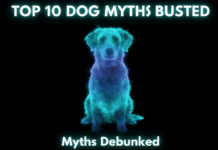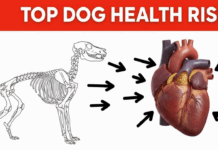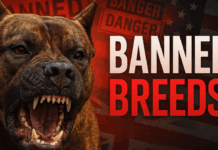Last Updated on October 1, 2025 by Dogs Vets
Feeding your dog isn’t just about filling the bowl — it’s about giving them the right amount of energy to thrive. Too few calories can leave your dog tired, skinny, and unhealthy. Too many calories, and you risk obesity, diabetes, joint issues, and shorter lifespans.
The question every dog owner asks is simple: “How many calories does my dog need each day?”
The answer is not so simple — it depends on weight, age, activity, and life stage. That’s why we’ve built a Free Dog Food Calculator that uses veterinary formulas to give you a tailored estimate for your furry friend.
🔑 Why Dog Calorie Needs Matter
Calories are a measure of energy. Dogs burn calories to:
- Run, play, and exercise
- Maintain body temperature
- Grow (in the case of puppies)
- Support organ function and repair
Feeding the wrong number of calories doesn’t just cause weight problems — it affects your dog’s entire quality of life.
🧮 Veterinary Formula for Dog Calories
Vets use two formulas:
- Resting Energy Requirement (RER):
RER = 70 × (weight in kg ^ 0.75)This estimates calories needed at rest.
- Maintenance Energy Requirement (MER):
MER = RER × multiplierThe multiplier depends on age, neuter status, and activity level.
Common Multipliers
- Neutered adult: 1.6 × RER
- Intact adult: 1.8 × RER
- Puppy under 4 months: 3 × RER
- Puppy 4+ months: 2 × RER
- Weight loss: 1.0 × RER
- Working/athletic dogs: 2–6 × RER
🐕 Example Calculation
Let’s say you have a 20 kg (44 lb) neutered adult Labrador.
- RER = 70 × (20 ^ 0.75) ≈ 662 kcal/day
- MER = 662 × 1.6 = 1059 kcal/day
So this Lab needs about 1,060 calories per day.
If the kibble provides 350 kcal per cup, then:
- 1059 ÷ 350 ≈ 3 cups per day (split into meals).
📊 Why Use a Dog Food Calculator?
You can do the math by hand, but a calculator makes it easier. With our Free Dog Food Calculator, just enter:
- Your dog’s weight (kg/lbs)
- Age or life stage (puppy, adult, senior)
- Neuter/spay status
- Activity level
- Calories per cup or per kg of food
And instantly get:
- Daily calories (kcal/day)
- Cups of food per day
- Grams of food per day
- Per-meal portion sizes
🐶 Feeding Guidelines by Life Stage
Puppies
- Need 2–3× the calories of adults.
- Divide into 3–4 small meals daily.
- Puppy food is usually more calorie-dense.
Adult Dogs
- Most adults need 1.6–1.8 × RER.
- Split into 2 meals per day for better digestion.
Senior Dogs
- Older dogs are less active, often needing 10–20% fewer calories.
- Look for senior dog foods lower in fat but rich in protein.
🍲 Wet vs. Dry Dog Food Calories
Calories vary by food type:
- Dry kibble: ~300–450 kcal per cup
- Wet food (cans): ~300–400 kcal per 13oz can
- Raw diets: Highly variable; check kcal/kg
Always read the food label. Calories per cup can differ dramatically between brands.
⚠️ Common Feeding Mistakes
- Free feeding (leaving food out all day) → leads to obesity.
- Guessing cups → always use a measuring cup.
- Too many treats → keep treats under 10% of daily calories.
- Not adjusting for age/activity → puppies, seniors, and working dogs all need different portions.
- Ignoring body condition → even with math, always check your dog’s waist and ribs.
🧑⚕️ How to Tell If Your Dog Needs More or Less Food
Use the Body Condition Score (BCS) chart:
- Underweight: Ribs, spine visible, no fat cover.
- Ideal: Ribs felt but not seen, visible waist.
- Overweight: No waist, hard to feel ribs, belly sagging.
Adjust feeding by 10–20% up or down based on this score.
🌟 Benefits of Using Our Dog Food Calculator
- Quick and accurate
- Saves you guesswork
- Helps manage weight
- Converts calories into cups and grams
- Supports both dry and wet food
🐾 FAQ – Dog Calorie Needs
Q: How many calories does my dog need per day?
A: It depends on weight, age, and activity. A 10 kg neutered adult needs ~400–500 kcal/day, while a 30 kg dog may need over 1,200 kcal/day.
Q: How do I calculate how many cups of food to feed my dog?
A: Divide daily calories by kcal per cup (check the food bag). For example, if your dog needs 1,000 kcal/day and the food has 350 kcal/cup, feed ~2.8 cups daily.
Q: Can I use the same formula for puppies?
A: Yes, but multiply RER by 2–3 for growing puppies. Puppies need more frequent meals too.
Q: What about treats?
A: Keep them to 10% of daily calories or less. Adjust main food portions accordingly.
Q: Should I trust the feeding guide on dog food bags?
A: They are averages and often overestimate. A calculator plus BCS monitoring is more reliable.
“How many calories does a dog need? Use our Free Dog Food Calculator to find daily calories, cups, and grams tailored to your dog’s weight, age, and activity.”
🐕 Final Thoughts
Every dog is different. Instead of guessing, use science. Our Dog Food Calories Calculator helps you tailor nutrition to your pet’s needs — keeping them healthy, energetic, and at the perfect weight. Monitor your dog’s body condition, adjust as needed, and always check with your vet for personalized guidance.
🐾 Dog & Cat Calories Calculator
Estimate your pet’s daily calorie needs and convert them into cups and grams of food. Select dog or cat, enter weight and food info, and get results instantly.
Results
RER: — kcal/day
MER: — kcal/day
Food: — g/day | — cups/day
—
Understanding Weight Control and Nutrition
Feeding your dog the right amount of calories is essential for maintaining a healthy weight and avoiding related health issues like obesity or malnutrition.
- Underfeeding: Can lead to weight loss, muscle depletion, and potential nutritional deficiencies.
- Overfeeding: Can cause weight gain, leading to obesity and health complications such as diabetes and joint issues.
Consult Your Veterinarian
While online calculators and charts can give you an estimate of your dog’s caloric needs, certain conditions may affect those needs. If your dog is dealing with a medical condition, such as hypothyroidism, or is pregnant, consult your veterinarian for personalized advice on feeding.
References
- American Kennel Club – Calories and Nutrition for Dogs
- PetMD – Understanding Your Dog’s Caloric Needs
- Veterinary Centers of America – Determining Caloric Intake for Dogs
- National Research Council – Nutrient Requirements of Dogs and Cats

















